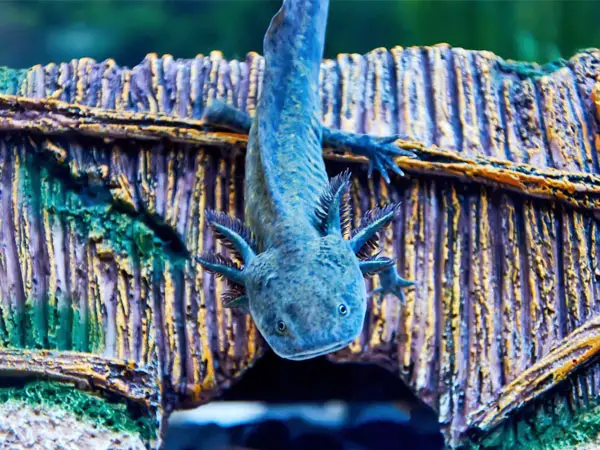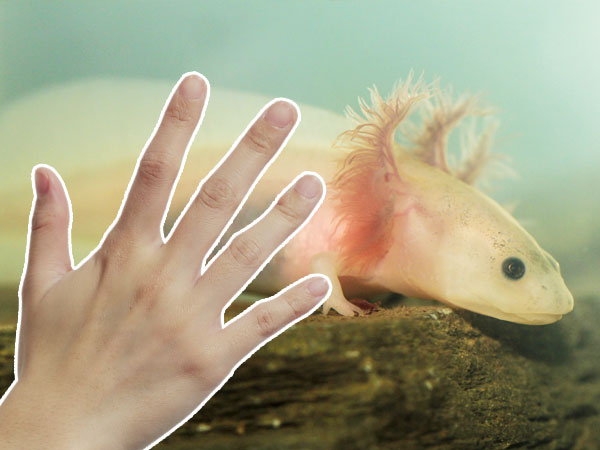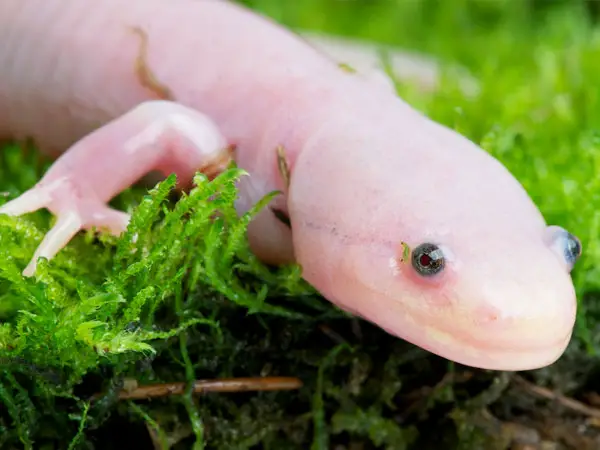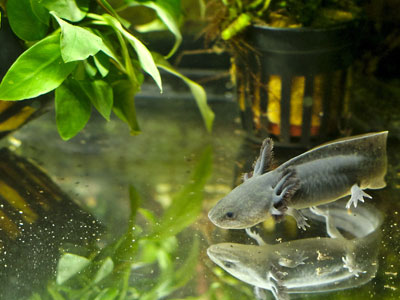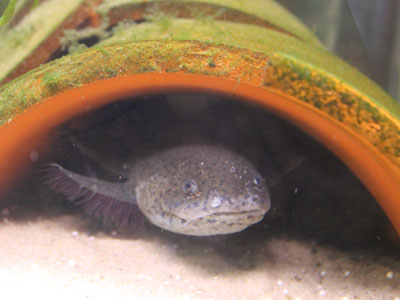
Axolotls are an interesting amphibian species, so much so that they count as one of the most scientifically researched salamanders.
Unfortunately, populations in the wild are rapidly declining, and today axolotls are a critically endangered species with their habitat being downsized to a single lake in Mexico City.
In this context, it’s crucial that if you buy a pet axolotl, you research their water requirements, eating habits, and even their behavioral patterns.
In this article, I’m going to answer some common questions about the sleeping behavior of axolotls, namely if they sleep or not, and how long do they sleep for.
If you’re an inexperienced axolotl owner, I encourage you to read this article to find out which behavior counts as normal and which behaviors may be cause for alarm when it comes to sleeping axolotls.
Do Axolotls Sleep?
If you look closely, you’ll notice that axolotls don’t have eyelids, making it difficult to tell if, and when are axolotls sleeping.
Since they don’t close their eyelids, you’ll need to search for other clues that can indicate that your axolotl is having a snooze.
But to answer the question, yes, axolotls do sleep or rest, but their sleeping behavior is different from what we as humans consider sleeping.
Another thing that may make it difficult to determine if your axolotl is resting or not is the fact that they are nocturnal creatures, meaning they are most active during the night.
While captive-bred axolotls may not exhibit this nocturnal trait as strongly as their counterparts in the wild, axolotls in the wild usually hunt for prey at night.
Therefore, don’t get alarmed if your axolotl seems too mellow during the day. Sneak up on it during the night and you may see it being more active.
How to Tell If Your Axolotl is Sleeping?
Since your axolotls will always have its eyes open, you may have trouble telling if your axolotl is awake or sleeping.
Still, there are a few tell-tale signs that indicate that your axolotl is sleeping. For example, if your axolotl is retreating in its hiding space and remains still, it’s highly likely that it is having a snooze.
While resting, there is little gill movement and your axolotl may even become paler due to inactivity.
However, an axolotl that floats in the tank unwillingly, floats upside down or on its side, or an axolotl that doesn’t move from the bottom of the tank at all, or swims frantically may be ill and you may need to check for other symptoms of disease like the refusal to eat or signs of infection.
Indeed, when sick, your axolotl may be refusing to eat and may show signs of lethargy and discoloration, lack of waste production (which can be due to constipation or bowel obstruction).
One of the major causes of disease in axolotls is stress, which can be due to excess light, strong water current, or bad water conditions.
Bowel obstruction due to constipation or the ingestion of gravel or pebbles in the tank is also common with axolotls
If you notice anything amiss with in the behavior of your axolotl like you notice it floating in the tank on its side, make sure to check if water parameters (including water temperature) are within the acceptable range.
If water conditions are optimal, you might want to consider the possibility of trapped gas in the intestines, constipation or bowel obstruction.
Or if water conditions are optimal and your axolotl doesn’t exhibit any other symptoms of disease, and it’s just hiding away for a couple of hours, it may be simply resting.
Be advised that changes in water temperature can also affect their behavior. For example, water that is a bit warmer than their acceptable range will increase their appetite (and their waste production) and they may seem a bit more active. But warm water also increases the risk of fungal infections and ammonia spikes.
Temperatures below their acceptable range will slow down their metabolism and you may notice decreased activity levels.
Therefore, it’s important to ensure that the water temperature is within 60 – 64 Fahrenheit (16 and 18 degrees Celsius) which is their ideal range.
How Long Do Axolotls Sleep?
Since it’s difficult to tell when exactly your axolotl is sleeping, there isn’t a clear-cut answer to the question of how long they should be sleeping.
However, it’s safe to assume that since axolotls do need rest just like other aquatic creatures, they do require multiple hours of rest to regenerate too.
If you monitor the behavior of your axolotl closely, you will quickly become accustomed to their resting and activity patterns, and you will be able to tell right away if something is wrong with them.
One “test” that aquarists often perform to see if their axolotl is sleeping or if their lack of motion is due to something more serious, is to wiggle some food in front of them to see if they snap down on it.
While axolotls have poor eyesight, they do have a strong sense of smell and can immediately notice if food is being offered to them. A healthy axolotl will usually snap down on food that is being offered.
Do Axolotls Need Artificial Light?
Axolotls don’t require artificial lighting, in fact, they don’t enjoy strong lights, whether natural or artificial.
That said, you may need some light in your aquarium if you have a planted tank since your plants will need light to survive.
If that’s the case, I recommend that you design your aquarium in a way to provide your axolotl plenty of hiding spaces in the form of a cave, for example.
This way, your axolotl can seek out darker spots in the aquarium when they need to rest.
Conclusion
If you’re an inexperienced axolotl pet owner, you may have trouble telling which behavior is normal and which isn’t normal for your axolotl.
I hope this article has brought you closer to identifying these behaviors in your axolotl so you can tell more easily if your pet axolotl is resting or it’s potentially struggling with a health issue.

